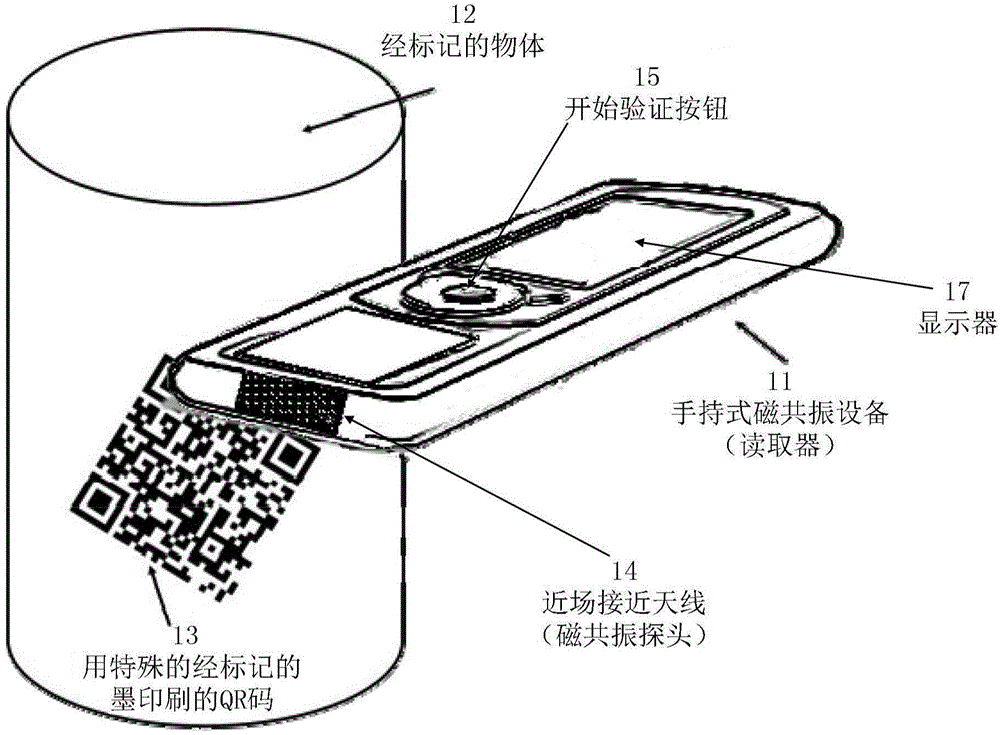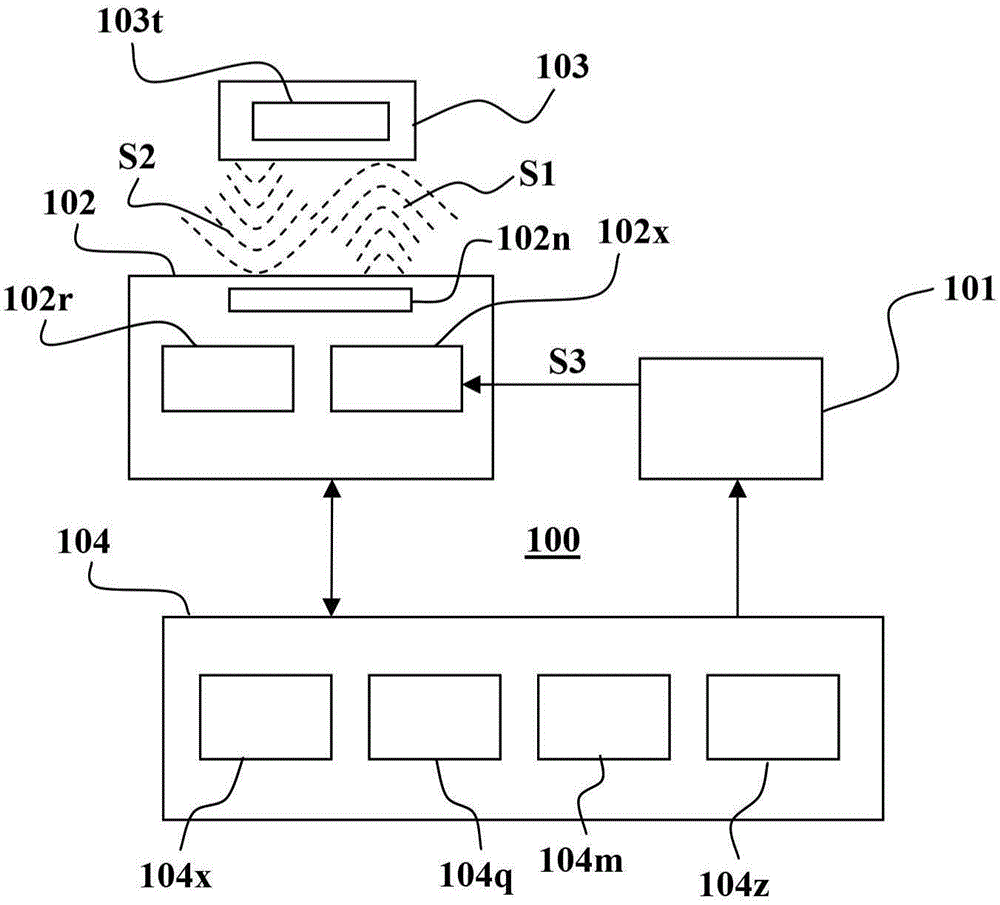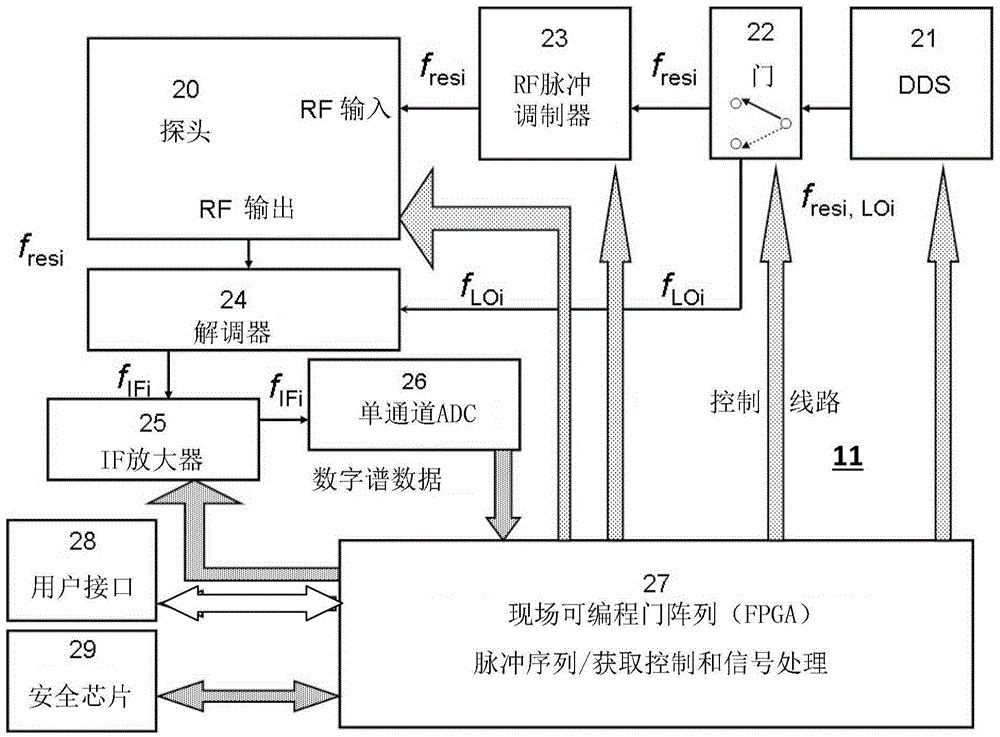Magnetic Resonance Apparatus For Rapid And Reliable Detection And Recognition Of A Trace Of Specific Substances
A technology of magnetic resonance and equipment, applied in the direction of magnetic resonance measurement, measurement of magnetic variables, measurement of magnetic variables, etc., can solve problems such as interference, difficult identification tasks, and destruction of magnetic medium data, etc., to promote compactness, simplify hardware and Effects of Design Considerations
- Summary
- Abstract
- Description
- Claims
- Application Information
AI Technical Summary
Problems solved by technology
Method used
Image
Examples
example 1
[0097] Synthesize several grams of Mnf(W) type with T by precipitation from ferrous and manganous aqueous solutions. c =770K ferrimagnetic manganese ferrite (ferrimagnetic manganese ferrite) MnFe 2 o 4 (H.Yasuoka, A.Hirai, T.Shinjo, M.Kiyama, Y.Bando, T.Takada, J.Phys.Soc.Jap., 22(1967) 174–180), followed by pulverization into micron size (with powder with an average size of about 2 μm). A relatively large amount (-2 mg) of micron-sized Mnf(W) powder was then placed near the probe of the reader and a SCSE sequence was applied. The test is performed at room temperature. Use the following parameters for the SCSE sequence: f SE1 =510MHz,△f SE =5MHz,f IFi =-1.75MHz,n=11, =(0°,0°), =(0°,180°), =(0°,180°),P SEi1 =P SEi2 =2W,S SEi1 =S SEi2 = Gaussian distribution (Gaussian), τ p1i ,=0.8μs,τ p2i ,=1μs,τ dSEi =6μs,τ Acqi =0.5μs,τ RRi =21μs and N Acq =32000. The total test time is 10.6 seconds. For the lowest peak (at 525MHz) SE intensity, the achieved signal-to-...
example 2
[0101] Synthesized from reagent grade oxide by traditional sintering technique with T c =364K of several grams of ferromagnetic manganite (ferromagnetic manganite) La0.7Sr0.3MnO3 (LSMO) ceramics (Y-Ch.Liou, Y-R.Chen, Ceram.Intern., 34 (2008) 273–278) were then pulverized into Micron-sized (with an average size of about 2 μm) powder. Then a relatively large amount (-6 mg) of micron-sized LSMO powder was placed near the probe of the reader and the SCSE sequence was applied. The test is performed at room temperature. Use the following parameters for the 4SE sequence: f SE1 =250MHz,ΔfSE=5MHz,f IFi =1.5MHz,n= 9 , =(0°,0°), =(0°,180°), =(0°,180°),P SEi1 =P SEi2 =1.2W,S SEi1 =S SEi2 = uniform distribution (Rectangular), τ p1i ,=τ p2i ,=0.5μs,τ dSEi =4μs,τ Acqi =0.5μs,τ prei =0.2μs, M SE =128 and N Acq =1000. The total test time is 7 seconds. The achieved signal-to-noise ratio is above 8 for the peak at 270MHz. The broad-line frequency-domain curve NSE(f) obtai...
PUM
| Property | Measurement | Unit |
|---|---|---|
| thickness | aaaaa | aaaaa |
| thickness | aaaaa | aaaaa |
Abstract
Description
Claims
Application Information
 Login to View More
Login to View More - R&D
- Intellectual Property
- Life Sciences
- Materials
- Tech Scout
- Unparalleled Data Quality
- Higher Quality Content
- 60% Fewer Hallucinations
Browse by: Latest US Patents, China's latest patents, Technical Efficacy Thesaurus, Application Domain, Technology Topic, Popular Technical Reports.
© 2025 PatSnap. All rights reserved.Legal|Privacy policy|Modern Slavery Act Transparency Statement|Sitemap|About US| Contact US: help@patsnap.com



